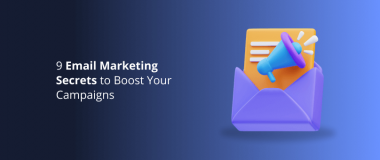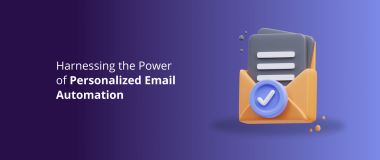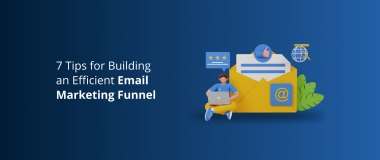Email is everywhere these days. We’re bombarded with promotional messages, newsletters, and spam, spam, spam. But one type of email delivers special value – the transactional email.
Transactional emails provide key information users need, like order confirmations, password reset instructions, or shipping notifications. They deliver personalized, concise messages that focus on the essential details of the transaction.
Unlike other emails fighting for attention in your inbox, transactional emails offer utility. They aim to help, not sell. Though sometimes overlooked, these emails have proved they should not be ignored. Furthermore, because of their nature, they tend to have a high open rate (typically 50-60%). They enhance the user experience by keeping customers informed and contribute to the development of long-term brand loyalty.
While they may seem like they are everywhere, transactional emails can be tricky. This article will cover everything you need to know about this type of email, from why to how, so keep on reading.
Readers Also Enjoy: The Formula for a Successful Email Marketing Campaign – DevriX
What Is a Transactional Email?
Transactional emails serve as responses to a user’s interaction with your website. Without these emails, your customers might be left wondering about the status of their purchase.
Usually these emails are not promotional. Their intent should be clearly mentioned in the subject line. But as they have a higher engagement rate many wonder if they can use the opportunity to be more creative and add some more value to them. The answer depends on where your customers are located.
If your customers are in the European Union GDPR standards apply, so no marketing additions are allowed. As customers can’t unsubscribe from essential transaction emails you need to stay focused on the transaction, not try to subtly push promotions.
For your customers in the US, the CAN-SPAM Act gives you a little more room with your transactional emails. As long as the main focus is keeping it transactional, you can spice up the subject line beyond just the transaction details. And you’ve got space to represent your brand as long as it’s not overwhelming the transactional content.
Transactional Email vs Marketing Email

Transactional emails give the information people need – order updates, password resets, etc. Marketing emails aim to capture the customers attention by using promotional techniques/ wording like discounts! sales! new products!
Marketing emails also aim to reach larger and more diverse audiences. Transactional emails are more personalized.
With a little tact and some finesse, you can leverage both these emails,capturing the customer’s attention at an important moment of interest.
Marketing emails are more challenging to create and tend to have lower open rates compared to transactional emails, which are typically easier to create.
Keep in mind that, most common transactional emails are order confirmations, shipping confirmations, account creation confirmations, etc. And in order to maintain transparency and clarity, you cannot treat all triggered emails as transactional. This includes welcome email series, abandoned cart emails, requests for reviews, back-in-stock notifications, birthday email notifications, and more.
The Importance of Email Automation for Transactional Emails
Email automation is highly recommended, as manually sending of transactional messages can be confusing and most definitely is an inefficient use of time and resources.
Automated emails offer several benefits:
- Transactions proceed smoothly as customers have the information they need thus reducing customer service complaints/contacts.
- Messages are highly relevant as they directly concern purchases made. Related promotions can also be incorporated, for example, User generated content showing how other customers use the product or instructions. As long as you follow the 80:20 rule (80% transactional, 20% promotional) you can use the opportunity to send discounts or special offers.
- Transactional emails build customer trust over time, which can increase revenue.
- As these updates are part of the positive post-purchase experience, they grow the retention rates because your customers know what to expect.
Standard automated transactional emails provide the following:
- Order confirmations containing purchase details
- Shipping notifications with delivery timelines
- Delivery confirmations
- Review requests to obtain customer feedback
- Account notices, renewal reminders, password resets – important account communications
How to Improve Email Deliverability of Transactional Emails
What happens if your transactional email ends up in spam folders? Your customer might think their order was not received,, or that their credit card worked when it didn’t, or even that you signed them up to a subscription without their consent, correct? How will this affect you or your brand reputation? This is why it’s very important to constantly work on improving email deliverability.
Here are a few tips on how to do it:
Use a Dedicated Address
When sending transactional emails from your online store, it’s best to use a sender address that clearly represents your business brand. Though transactional emails are generally exempt from CAN-SPAM regulations, using an email address like [email protected] ensures your messages are delivered and comply with email standards. Dedicated transactional email addresses specifically tied to your ecommerce store domain help identify your business and build trust with customers.
Implement authentication protocols like SPF (Sender Policy Framework) and DKIM (DomainKeys Identified Mail) to verify the authenticity of your emails. This helps in building trust with email service providers (ESPs).
Make the Subject Line Clear
When crafting subject lines for transactional emails, be clear, concise and literal. Avoid cleverness or sensational wording, as this could imply the email is primarily marketing-related rather than transactional. Using misleading or promotional-sounding subject lines could make your operational emails subject to CAN-SPAM rules.
The subject line should clearly communicate the transactional purpose of the email. For instance:
- “Order Confirmation #123456”
- “Shipment Sent for Order #123456”
- “Account Activated”
Keep the Copy Brief and Straightforward
Similar to the subject line, keep the content of your transactional emails concise and focused on the key details the customer needs to know. Remember – you’ve already earned the sale, so now is the time to be helpful and non-promotional.
Play the Long Game
Transactional emails might be informative but they still offer an opportunity to build your brand. Make sure they reflect your visual identity with the proper colors, fonts, logos, etc. As long as branding doesn’t overwhelm the primary transactional purpose, you can also incorporate links to social media, product usage guides, user-generated content featuring the purchased item, local store notifications, and post-purchase recommendations. These types of relevant brand content help nurture long-term loyalty.
Readers Also Enjoy: 9 Tools to Use to Automate your Email Marketing Campaigns – DevriX
Monitor Your Email Sending Reputation
It is important to regularly monitor your email sending reputation using tools like Google Postmaster, as your reputation has a major impact on deliverability and inbox placement.
Tracking your reputation metrics over time lets you identify issues early, gauge the overall health of your email program, see the effects of any changes you have made, and obtain any actionable feedback that enhances your standing.
A good sending reputation also demonstrates your commitment to good emailing practices and increases the likelihood your messages will be delivered, so checking in frequently and addressing any dips should be a key part of your email sending strategy.
Monitor Blacklists
Blacklists are signals to ISPs that your emails should be blocked or filtered. That is why it’s important to regularly check industry email blacklists to ensure your IP addresses or domains have not been added.
If you find yourself on a blacklist, you should take prompt action by looking into the reason you are on the list, implementing the necessary fixes, and then requesting removal.
Staying on top of your blacklist status and being ready to address any issues will help your emails reliably reach their destination.
Educate Your Recipients
When a customer interacts with your website, for instance, by making a purchase, inform them after they checkout that they will receive your transactional email. This way, they will know what to expect and will be willing to search for it if it didn’t end up in the right inbox. Encourage them to add your email address to their address book or whitelist it to ensure your emails are delivered to their inbox.
Transactional Email Best Practices from Ecommerce
Let’s look at some real-life examples of effective transactional emails that seamlessly incorporate value-adding elements while maintaining their core functional purpose.
Account Verification
Headspace’s account verification email provides the key details recipients need – when the link expires, why verification is required, and how to complete it – while maintaining a positive, welcoming tone.
Account activation messages like this quickly reassure customers that the process will be fast and easy through optimistic language and brevity. Headspace also uses the opportunity to add social media links, strengthening brand connections while keeping the tone helpful and straightforward.
Password Reset
Well-designed password reset emails like Spotify’s build trust by personalizing the message, using a clear subject line, and prominently displaying a reset link or action button. They provide clear guidance on what recipients should do, including how to create a new reset link if they did not initiate the request..
The best password reset emails are straight to the point, easy to follow, and allow the recipient quick account access to their account.. A friendly yet concise tone and essential information about security and expiration convey professionalism and reliability.
Order Confirmation
Wildfang’s order confirmation email is an excellent example of how a confirmation email should be done.
It Itemizes each product ordered, detailing final sale items, applied discount codes, and total savings, leaving the customer feeling satisfied. On top of that, Wildfang also provides the customer with order shipment confirmation specifics as well as clear logistical expectations.
Shipping Confirmation
Tradesy is a good example of how a company can use its shipping notifications to promote gifting and referrals. The company offers its customers $20 off for friend referrals instead of asking for more purchases.
Creative post-purchase emails like this encourage repeat business and deeper brand engagement. Whether it be promotions, referrals, or other incentives, well timed and relevant post-transaction emails can boost conversion rates by inviting recently satisfied customers to share or purchase again.
Readers Also Enjoy: 8 Hacks to Make Your Email Marketing Effective the Inbound Way – DevriX
Delivery Confirmation
The importance of a well-crafted delivery confirmation email cannot be emphasized, as Tradesy’s savvy use of shipping alerts to drive referrals shown. Laird Superfood illustrates this concept by providing a cheery and entertaining transactional email that does more than just inform. The delivery notification begins with a customized salutation, which immediately establishes a relationship with the recipient. The material then blends important facts with a touch of warmth, encouraging clients to do the “happy dance” because their item has arrived.
By sharing in the consumer’s excitement, the company reinforces its relationship with the customer, discreetly establishing the framework for further interaction without the overt drive for further sales. It’s an approach that respects the customer’s purchasing path, celebrates successful delivery, and promotes brand loyalty—all on a positive note.
Wrap Up
Transactional emails are extremely important to business communications. They should be helpful rather than promotional, with a clear transactional purpose. Keeping transactional emails cleanly designed, concise, and centered on their core utility will optimize deliverability and visibility.
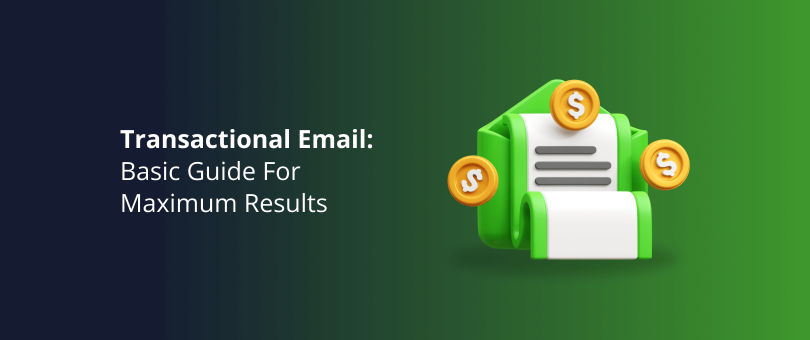

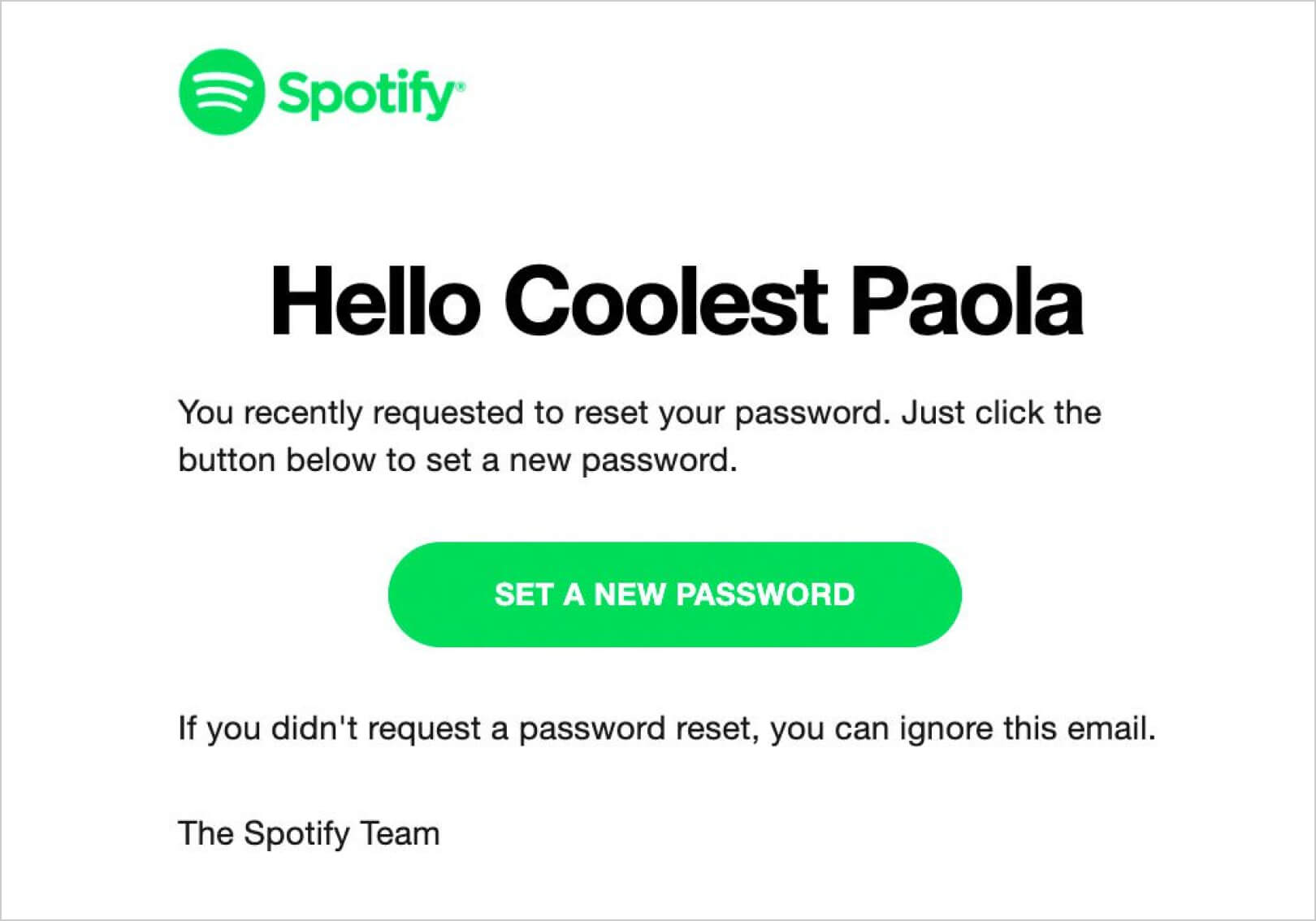
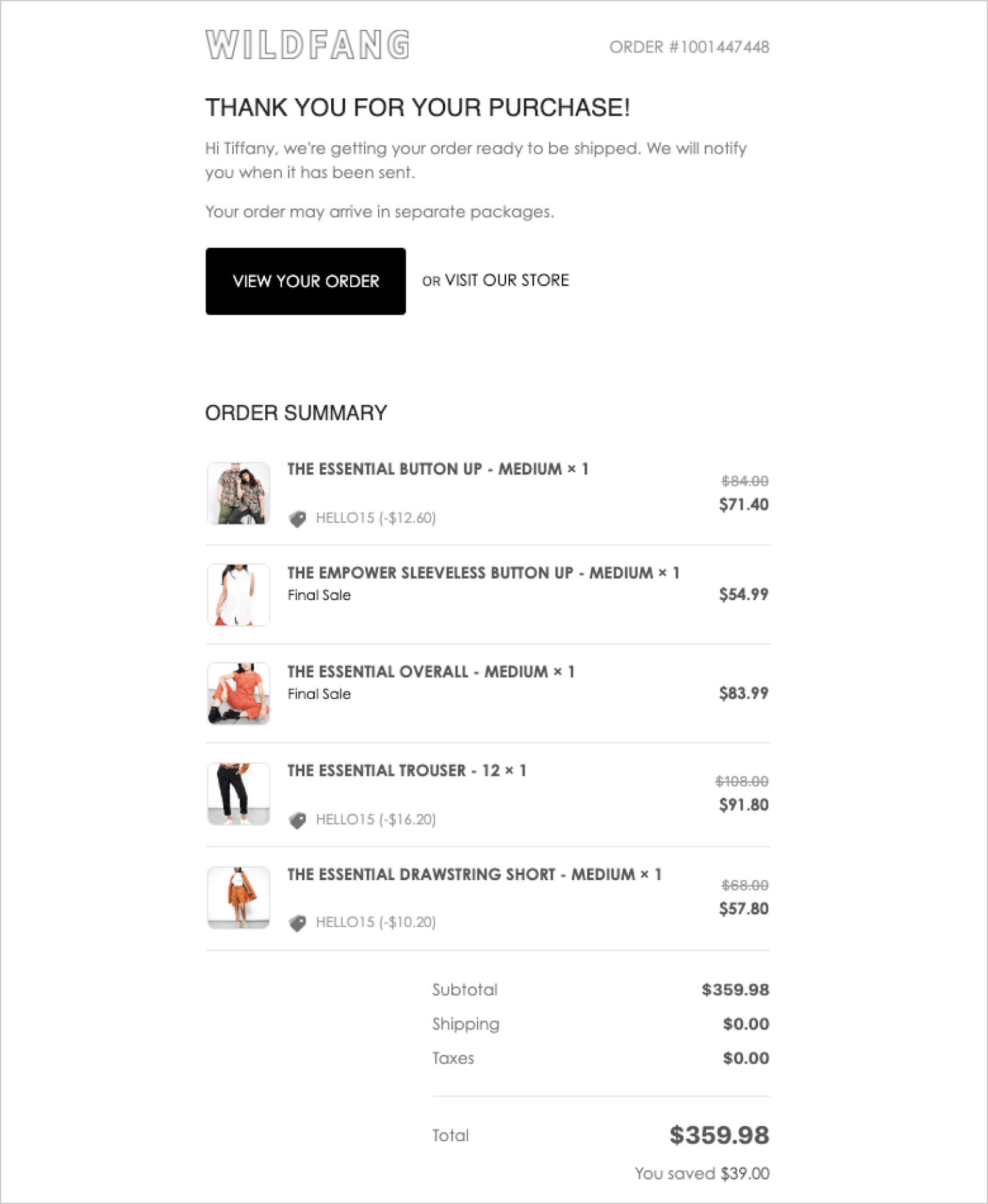
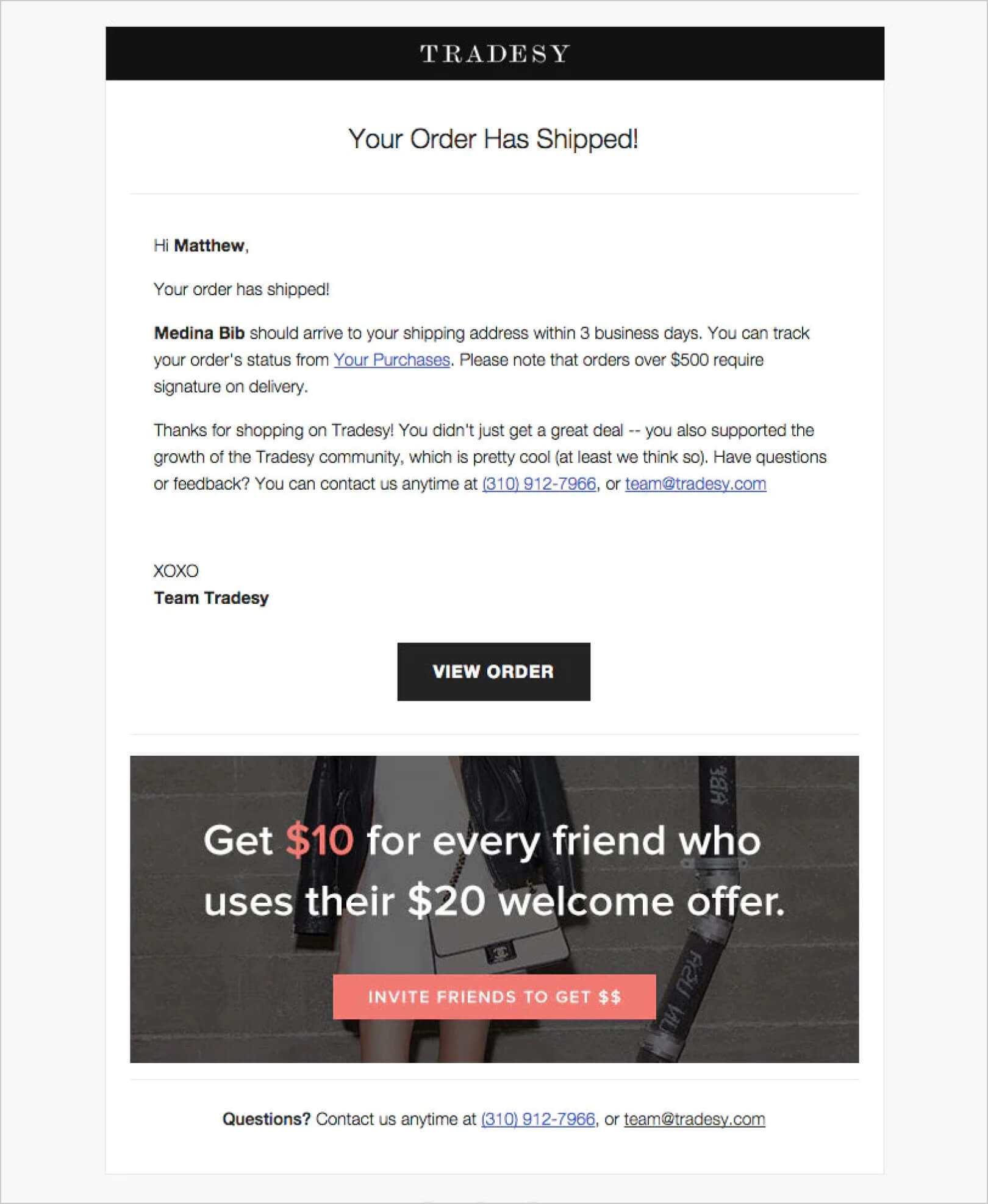
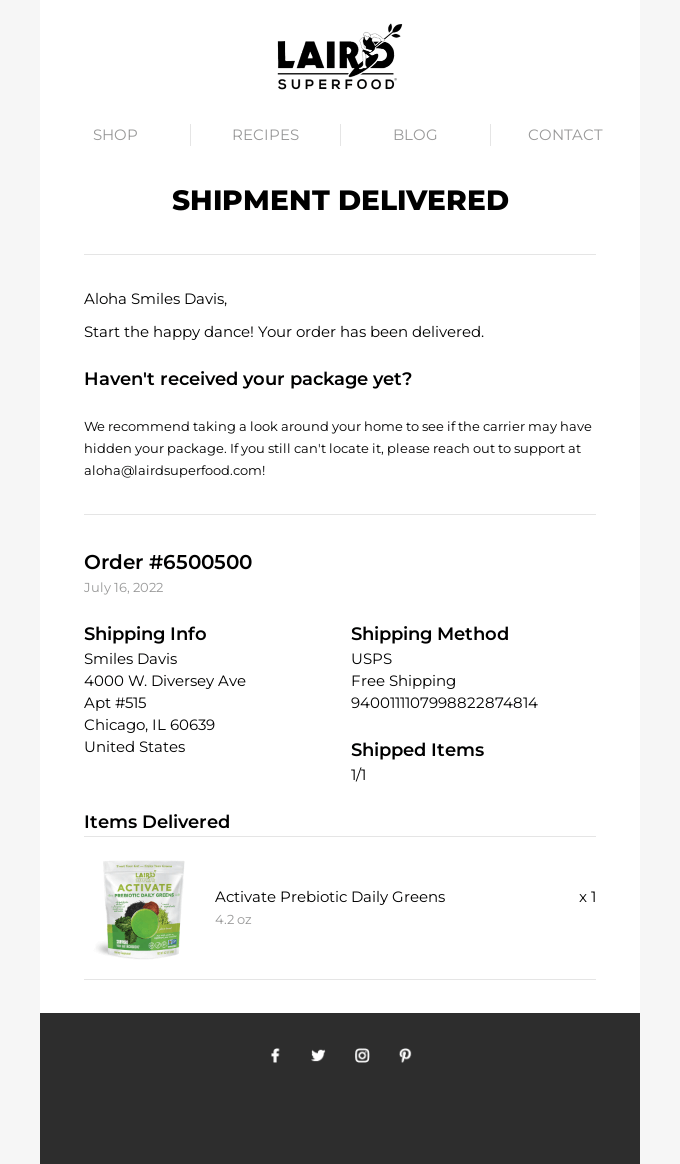
![[Infographic] 24 Fundamental Email Marketing Stats](https://devrix.com/wp-content/uploads/2018/01/Infographic-24-Fundamental-Email-Marketing-Stats-380x160.png)
